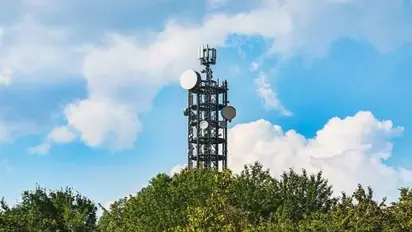Cabinet nod for auction of spectrum for 5G telecom services

Synopsis
A total of 72097.85 MHz of spectrum with 20 years of validity will be auctioned by end of July
The Union Cabinet has given the nod to conduct the auction of spectrum for 5G telecom services. According to a government statement, a total of 72097.85 MHz of spectrum with 20 years of validity will be auctioned by end of July.
While stating that digital connectivity has been a key aspect of the government's policy initiatives, the government underlined that the upcoming 5G services would fire up new-age businesses, generate more revenue for firms and generate employment through the use of cutting-edge technologies.
Also Read: Date of birth, death soon to be linked with Aadhaar
The auction will be held for spectrum in the high (26 GHz), middle (3300 MHz) and various low-frequency bands (600 MHz, 700 MHz, 800 MHz, 900 MHz, 1800 MHz, 2100 MHz, 2300 MHz). The high and the mid-frequency band spectrum will be utilised by telecom service providers to roll out the 5G services with Internet speed and capacities that would be about 10 times higher than the current 4G services.
According to the government statement, for the first time ever, successful bidders will not be mandatorily required to make upfront payments. Instead, they can make the payments for spectrum in 20 equal annual instalments that would be paid in advance at the start of each year.
This, the government says, would significantly lower the cost of doing business in this sector and ease the cash flow requirements. The bidders would also be given an option to surrender the spectrum after 10 years with no future liabilities with respect to balance instalments.
Also Read: 'This is not some Bollywood movie...': Veterans slam Agnipath scheme
Among other "progressive options" listed by the government with regard to the spectrum sale include the decision to provisionally allot two carriers of 250 MHz each in E-band to the Telecom Service Providers to ensure the availability of sufficient backhaul spectrum that is necessary to roll out the 5G services.
The Union Cabinet also decided to expand the number of traditional Microwave backhaul carriers in the existing frequency bands of 13, 15, 18 and 21 GHz bands.
Stay updated with all the latest Business News, including market trends, Share Market News, stock updates, taxation, IPOs, banking, finance, real estate, savings, and investments. Track daily Gold Price changes, updates on DA Hike, and the latest developments on the 8th Pay Commission. Get in-depth analysis, expert opinions, and real-time updates to make informed financial decisions. Download the Asianet News Official App from the Android Play Store and iPhone App Store to stay ahead in business.